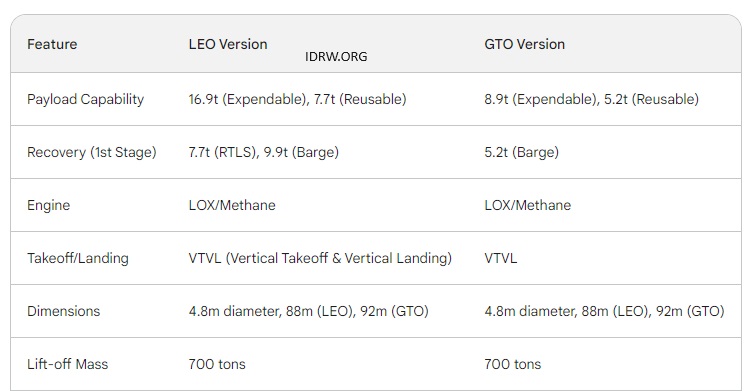SOURCE: RAUNAK KUNDE / NEWS BEAT / IDRW.ORG


The Indian Space Research Organisation (ISRO) has provided further insight into its ambitious Next-Gen Launch Vehicle (NGLV) program, revealing details about two variants: a Low Earth Orbit (LEO) and a Geostationary Transfer Orbit (GTO) version.
Leveraging existing technologies and infrastructure, the NGLV boasts a significantly shorter development time compared to previous launch vehicles. This accelerated timeline promises faster realization and deployment, allowing ISRO to remain at the forefront of space exploration.
The NGLV will be powered by a combination of indigenous engines, including the LM445, LM120, and LM50 for the LEO version and the LM445, LM120, and C32 engine for the GTO version. These engines represent the latest advancements in Indian rocket propulsion technology and offer improved efficiency and performance.
Two Variants:
The NGLV will be offered in two configurations:
- LEO Version: Designed for launching payloads into Low Earth Orbit (LEO)
- GTO Version: Optimized for launching heavier payloads into Geostationary Transfer Orbit (GTO)
Reduced Development Time:
A key feature of the NGLV program is its focus on rapid development. ISRO aims to achieve this through:
- Technology Developments: Leveraging existing technologies from ISRO’s ongoing projects, such as the LVM3 and Gaganyaan missions, to shorten the development cycle.
- LM445+ LM120 + LM50 Engines: Employing a combination of proven and new engine technologies, including the powerful LM445 semi-cryogenic engine, for efficient and reliable performance.
- Reusable Design: The NGLV’s first stage will be partially reusable, featuring a Return to Launch Site (RTLS) or landing on a barge, significantly reducing launch costs.
GTO Version:
- PPP Model: The development of the GTO version will involve a Public-Private Partnership (PPP) model, leveraging private sector expertise and resources to accelerate the project.
- LM445+ LM120 + C32 Engines: This version will utilize a slightly different engine configuration, incorporating the more powerful LM445 and LM120 engines, alongside the C32 cryogenic upper stage, to handle heavier payloads.
Key Specifications:


The NGLV program offers several advantages:
- Reduced Launch Costs: The reusable first stage and potential for private sector participation will significantly reduce launch costs compared to existing launch vehicles.
- Enhanced Payload Capability: The NGLV will be capable of launching heavier payloads into various orbits, enabling more ambitious space missions.
- Technological Advancement: The program will foster the development of new technologies and expertise within India, further solidifying its position as a leading spacefaring nation.
NOTE : Article cannot be reproduced without written permission of idrw.org in any form even for YouTube Videos to avoid Copy right strikes. Websites doing illegal reproductions will get DCMA and Legal Notices.